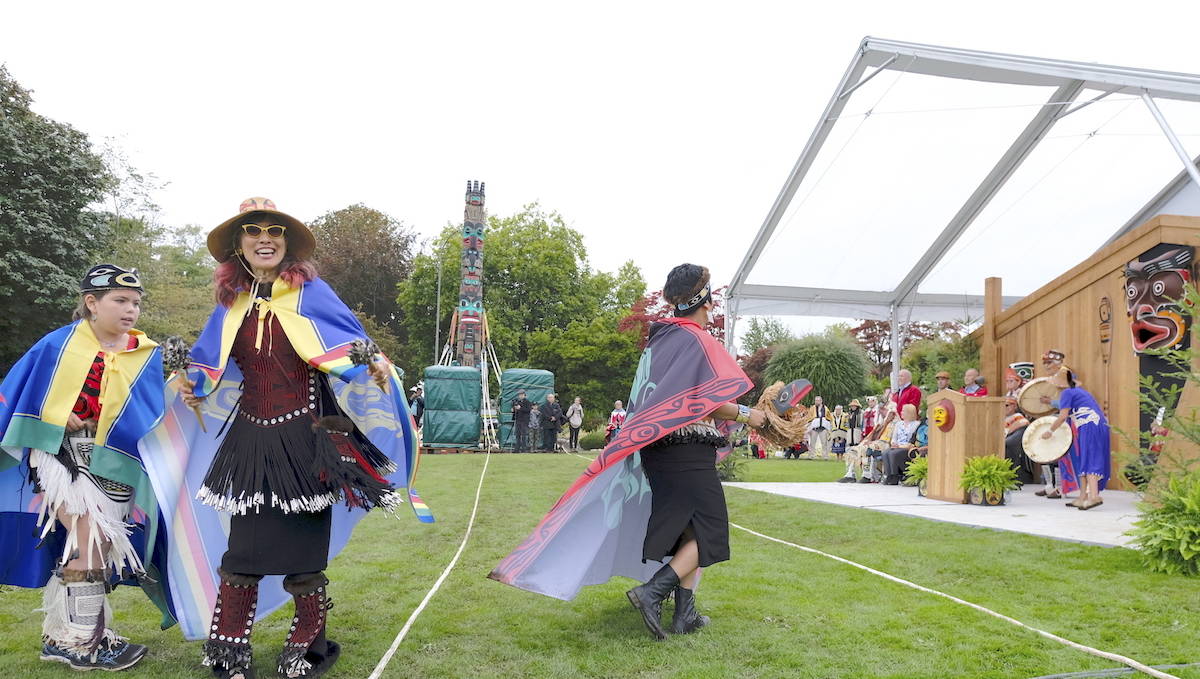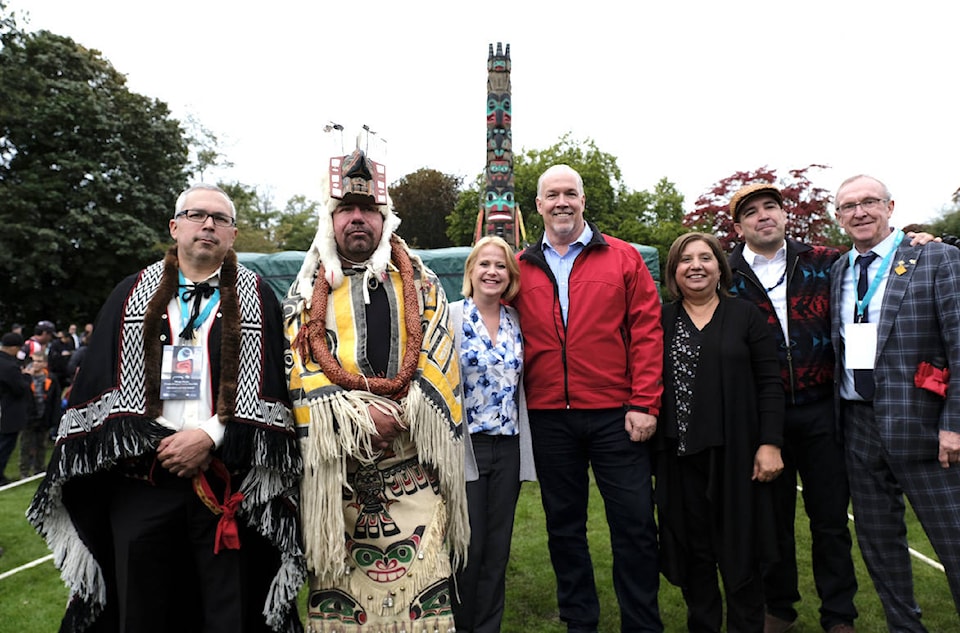Haida, Semiahmoo, Kwakwaka’wakw and provincial leaders joined to raise a restored replica totem pole at the Peach Arch border crossing last Friday.
Carved in the 1950s by the late Kwakwaka’wakw artist Mungo Martin, the pole is a replica of one that stood at Skedans / K’uuna Llnagaay.
Originally commissioned by the Royal B.C. Museum, the pole went up without ceremony, and in 2008 it was removed without any notice to the three First Nations to make room for a new Peach Arch visitor centre.
At the raising of the restored pole on Friday, Sept. 21, B.C. Premier John Horgan apologized for its undignified removal.
“There was no ceremony when the pole first went up, there was no respect when the pole was brought down, and on behalf of the province of British Columbia I want to apologize to all of those who were involved,” Horgan said.
After a welcome by Semiahmoo Chief Harley Chappell, Haida Nation President Peter Lantin, kil tlaats’gaa, said the event symbolized the collaborative efforts of coastal First Nations — in this case, a monumental pole with a Haida design, carved by a Kwakwaka’wakw artist, was raised on Semiahmoo territory.
“The business we’re doing here today has ancient roots,” Lantin said, thanking Councillor Joanne Charles of the Semiahmoo for leading the 10-year effort to have the pole restored.
Guujaaw, who was recently potlatched as Chief Gidansda, thanked the provincial government and everyone for setting the matter right, noting that a pole carved with ancestors’ crests is more than mere decoration, and its raising is at least as important as the pole itself.
“We’ve made a lot of mistakes, all of us have, and corrective measures have to be taken,” he said. “This is not a small gesture.”
While somewhat out of context, Guujaaw said he hoped that people who see the pole will not only be inspired by Haida culture, but to think about protecting the Earth.
“We’ve been dumbed down and educated to the point where people have forgotten that we’re part of this Earth,” Guujaaw said.
“The economy of the great Canada, of British Columbia, is built on spoiling the Earth… It’s a dilemma for us all now.”
Beginning with a blessing by Haida elder Diane Brown, GwaaGanad, the pole raising also featured songs and dancing by the Rainbow Creek Dancers / tuul gundlas cyaal xaada.
Before leading the group in a Haida paddling song, Robert Davidson noted that the song survived thanks to Mungo Martin and the Kwakwaka’wakw.

